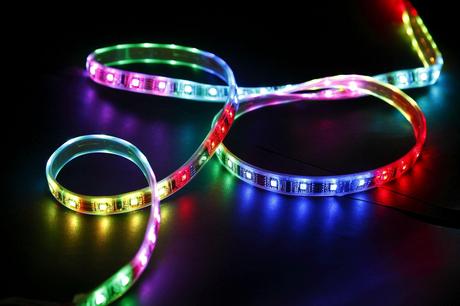
The generation of energy wasting incandescent lighting is coming to an end and the move towards environmentally friendly options is quickening. Domestic lighting has been at the brunt of new EU laws which have banned the selling of non-directional halogen bulbs. In 2010, the regulations outlawed incandescent spotlights and down-lights, obliging people to buy the less popular energy saving compact fluorescent bulbs for their kitchens and bathrooms. These rather dim bulbs are feared to cause migraines and eye complaints because the insufficient illumination is forcing people’s vision to work harder. Fortunately, the lighting revolution in light emitting diodes has provided an extremely energy efficient yet remarkably bright alternative to both the wasteful and the weak spotlight bulbs.
Consider firstly the problems associated with incandescent spotlights. In a kitchen where people work in a compact environment, the heat emitted by these wasteful bulbs can be uncomfortable if not rather dangerous. Where children are present, burnt fingers are a frequent occurrence. Kitchen cabinets are often affixed with some form of down-lighting to illuminate the surfaces. These are easily reached by wandering hands and at temperatures reaching 175°C, this is a real hazard. This large amount of heat being lost also counts for a large amount of energy wasted, and creates problems for the bulbs durability making them wear out quickly. So while a bulb may only cost £1, the homeowner will pay out on regular replacements as well as facing expensive electricity bills.
These safety and environmental issues suggest that an alternative to incandescent spotlights is crucial for a green and hazard-free future in domestic lighting. The LED spotlight is ready to be the new standard for domestic applications and it is quite obvious why. LED bulbs use 90% less energy than the standard while giving out exactly the same luminosity. For example, a 7 watt LED will provide the same bright glow as a 50 watt halogen bulb. Further to this, the LED bulb remains cool to the touch since the light is not dependent upon the passage of heat through a filament. This also means that the bulbs can be placed in recyclable plastic casing rather than fragile glass, increasing their safety in the family home. There is also no use of poisonous chemicals, like mercury which is found in fluorescent lighting, making them safer to dispose of, should that day ever arrive. The lifespan of an LED can reach a staggering 60,000 hours, and it is actually more likely to be the adjoining components which fail than the bulb, giving a more realistic average life of 40,000 hours. This is still over 10 years’ worth of light at an indulgent 10 hours a day usage rate.
So, a child friendly LED spotlight used in the kitchen would create a light bright enough to prepare, cook and clean by without adding extra heat to a room which already generates a lot from other sources. The electricity savings are an added bonus to this practical lighting source and the initial high cost of LED bulbs would be earned back within the first year and from then on it will be a simple case of low energy bills and a shrinking carbon footprint.

